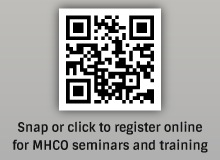While we know that anyone in a trusting relationship with the older person has the potential to be abusive, the dynamic is still predominantly intimate partner violence. This can be a long term relationship that has had abuse occurring all throughout the history of the relationship. Another form is a new relationship, possible post-divorce or widowed. In this relationship an older person may have experienced abuse in the past or this may be his or her first experience with abuse. Late Onset is a description of a relationship that has changed with an organic condition. The abusive person could have been controlling and verbally abusive and now is physically abusive. Or abuse may have not been present in the history of the relationship and now is, due to an organic condition such as dementia or capacity changes. Another dynamic is a person who was abused in the past and is now abusing the abuser. Believing, safety planning and collaboration are key in supporting the older survivor.
Take action by not letting the older folks in your lives be invisible. Try to notice when your older neighbor isn'taround or big changes occur in his or her lives. An adult child moving in, mobility changing, caregivers that aren'tconsistent or anyone that appears to be controlling the older person's life. Are the same support folks coming around or has something changed? Try to give that older adult some private space to have a safe conversation. Often, if the abuser thinks the older adult might be asking for help or telling others about the controlling behaviors, the abuser will retaliate. This could be punishing, physically and emotionally abusing or further isolation. Connecting with your local Adult Protective Services agency, Domestic Violence Agency and Social Service Senior agencies are a key way to help the older adult. The collaboration of these agencies can provide protection and support by the way of Elderly/Disabled Persons Abuse Prevention Act, criminal charges, emotional and resource support.

